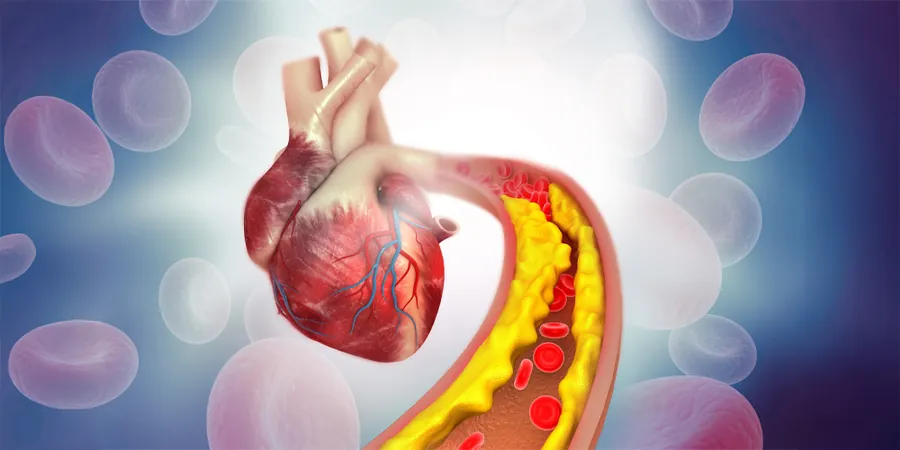
Unmasking TRIM13: The Hidden Culprit in Diet-Induced Atherosclerosis!
2024-12-31
Author: Sarah
Introduction
Cardiovascular diseases (CVDs) remain the world's deadliest health crisis, claiming around 17.9 million lives annually. Among these, atherosclerosis stands out as the leading offender. Alarmingly, cases of atherosclerosis and its related diseases are on the rise in Western nations, emphasizing the critical need for effective prevention and treatment strategies.
What is Atherosclerosis?
So, what exactly is atherosclerosis? This dangerous condition involves the accumulation of fatty deposits, known as plaque, within the walls of arteries. As these plaques build up, they narrow the blood vessels, restricting blood flow. This can culminate in a life-threatening event when a plaque ruptures, possibly leading to blood clots that block arteries or travel elsewhere in the body, resulting in heart attacks or strokes.
The Role of Cholesterol
A major factor in plaque build-up is cholesterol. Macrophages—immune cells that engulf and digest cellular debris—and smooth muscle cells in the arteries absorb excessive cholesterol and lipids, transforming into foam cells. These foam cells further contribute to the progression of atherosclerosis, but the underlying molecular mechanisms remain largely obscure, hindering the development of viable therapies.
The Groundbreaking Study on TRIM13
A groundbreaking study by researchers at the University of Tennessee Health Science Center has uncovered the role of tripartite motif-containing protein 13, or TRIM13, in promoting diet-induced atherosclerosis by disrupting cholesterol balance. This study, featured in the Journal of Biological Chemistry, suggests that targeting TRIM13 could lead to new treatment options.
Dr. Gadiparthi N. Rao led the research and revealed, “We observed that in mice fed a Western diet rich in fats and sugars, the transporters responsible for cholesterol exit were ubiquitinated and subsequently degraded.”
Connecting TRIM13 and Atherosclerosis
In an earlier study from 2018 by Monoranjan Boro, it was noted that mice genetically engineered to develop atherosclerosis exhibited significantly higher levels of TRIM13 when consuming a Western diet compared to those on a typical chow diet.
Findings on Cholesterol Transporters and TRIM13
The latest findings illustrate how a Western diet led to decreased levels of liver X receptors alpha and beta (LXRα/β) and their target genes, ATP binding cassette A1 and G1 (ABCA1, ABCG1) in the aorta and peritoneal macrophages of these mice. These receptors are pivotal transcription factors that regulate the expression of cholesterol transporters, which facilitate the movement of cholesterol from cells to the liver, where it is ultimately converted into bile salts for excretion.
Through experiments involving genetically modified mice lacking TRIM13, researchers discovered that the absence of this enzyme significantly reduced the severity of atherosclerotic lesions and restored LXRα/β protein levels.
The Impact of TRIM13 Deletion
The team noted that a Western diet heightened the ubiquitination and degradation of LXRα/β proteins while inhibiting the cholesterol export mediated by ABCA1 and ABCG1 in macrophages; remarkably, deleting TRIM13 reversed these effects. They also identified that TRIM13 ubiquitinates the suppressor of cytokine signaling 1 and 3 (SOC1/3), which is linked to elevated levels of CD36—a protein that enhances the uptake of fats by cells. Removing TRIM13 curtailed CD36 expression and foam cell generation.
Potential for New Therapeutics
Dr. Rao asserts the potential for developing medications that inhibit TRIM13, paving the way for innovative therapies against atherosclerosis. As he looks to the future, he highlights an urgent question: “What is the role of different cell types in this process? Are smooth muscle cells or macrophages more pivotal in TRIM13-driven atherosclerosis?”
Conclusion
As research progresses, understanding the molecular intricacies of atherosclerosis could revolutionize treatment and save millions of lives. Could TRIM13 be the key to unlocking new therapeutic avenues in the battle against cardiovascular diseases? Stay tuned!
 Brasil (PT)
Brasil (PT)
 Canada (EN)
Canada (EN)
 Chile (ES)
Chile (ES)
 Česko (CS)
Česko (CS)
 대한민국 (KO)
대한민국 (KO)
 España (ES)
España (ES)
 France (FR)
France (FR)
 Hong Kong (EN)
Hong Kong (EN)
 Italia (IT)
Italia (IT)
 日本 (JA)
日本 (JA)
 Magyarország (HU)
Magyarország (HU)
 Norge (NO)
Norge (NO)
 Polska (PL)
Polska (PL)
 Schweiz (DE)
Schweiz (DE)
 Singapore (EN)
Singapore (EN)
 Sverige (SV)
Sverige (SV)
 Suomi (FI)
Suomi (FI)
 Türkiye (TR)
Türkiye (TR)
 الإمارات العربية المتحدة (AR)
الإمارات العربية المتحدة (AR)